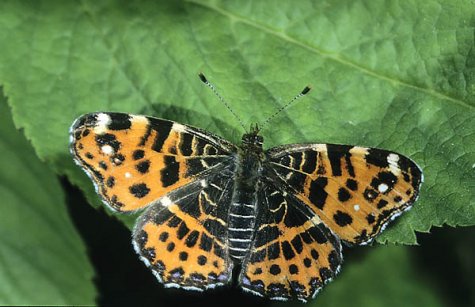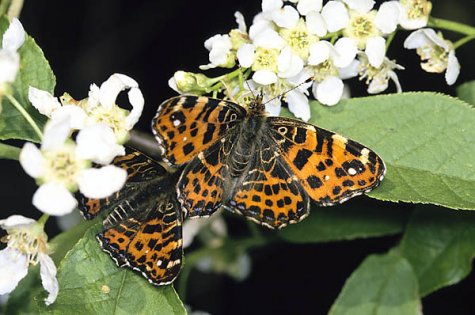Fashion trends in butterfly world
Text and photos Urmas Tartes
Translation: Liis
Map butterfly from spring generation
Map; Map butterfly Nõgeseliblikas
Every self-respecting fashion house prepares separate collections for spring and summer. In butterfly fashions things seem to be more boring. The imagos of one species are alike, they have the wing colours and pattern unique for the species. Yet there is one butterfly, well known on the Estonian mainland, who changes costumes.
Although the calendar already shows the summer month even now a medium-sized light brown butterfly with dark dots on the upper sides of wings might still be found flying at forest verges and in the garden. This is the spring generation of maps. The first map butterflies begin flying already in the beginning of May. In June they lay eggs.
Spring generation of map butterflies
The caterpillars hatched from the eggs devour a great amount of nettles in the course of a few weeks. On the nettle stems and leaves whole clutches of them can be seen. The map spends about a week as pupa in summer, hanging by the tip of the rear body in straws of grass or tree trunks.
The map butterflies that emerge from the pupa in summer, usually in July, are completely different from the spring ones. The long warm summer days affect the development of the butterfly like a tinting suntan lotion on a pale skin. On the wings of the butterflies that crept out of the pupae we now see intriguing velvety hues with paler pearly dots.
Besides the colours there are other differences between the generations. The summer butterflies are larger than the spring ones, and their wing tip angle is a little more acute. The body too is darker on the summer individuals. The summer butterfly is so remarkably different from the spring one that 200 years ago natural scientists still believed the spring and summer forms of the map butterfly to be two different species.
Different seasons change the exterior of many animals. This seems self-evident and natural to us. In winter frosts even man is aided by thicker clothes and in the warmth of summer dress is lighter. For the map butterfly both imago forms however occur in quite similar conditions as regards temperatures.
The colour change of the map is indirectly related to the change between cold and warm seasons. Although the temperature too influences the exterior somewhat, the colour change has a different major cause. The changes of seasons namely involve changes in the length of day and night. Here is the key to the colour change. Caterpillars from the eggs laid by the summer butterflies develop during September in conditions where the day is shorter than the night. Thus the light brown springtime generation imagos are born.
Caterpillars from the eggs laid by the spring generation develop in conditions when the day is longer than the night. When these caterpillars pupate, the dark summer butterflies emerge from the pupae.
Experiments have been made where map butterflies have been artificially reared in constant „long day“ and „short day“ conditions. In constant light conditions the colour change disappears. In long day conditions on average every two months a new dark summer generation evolves. For maps developing in short day conditions light springtime generations succeed each other.










